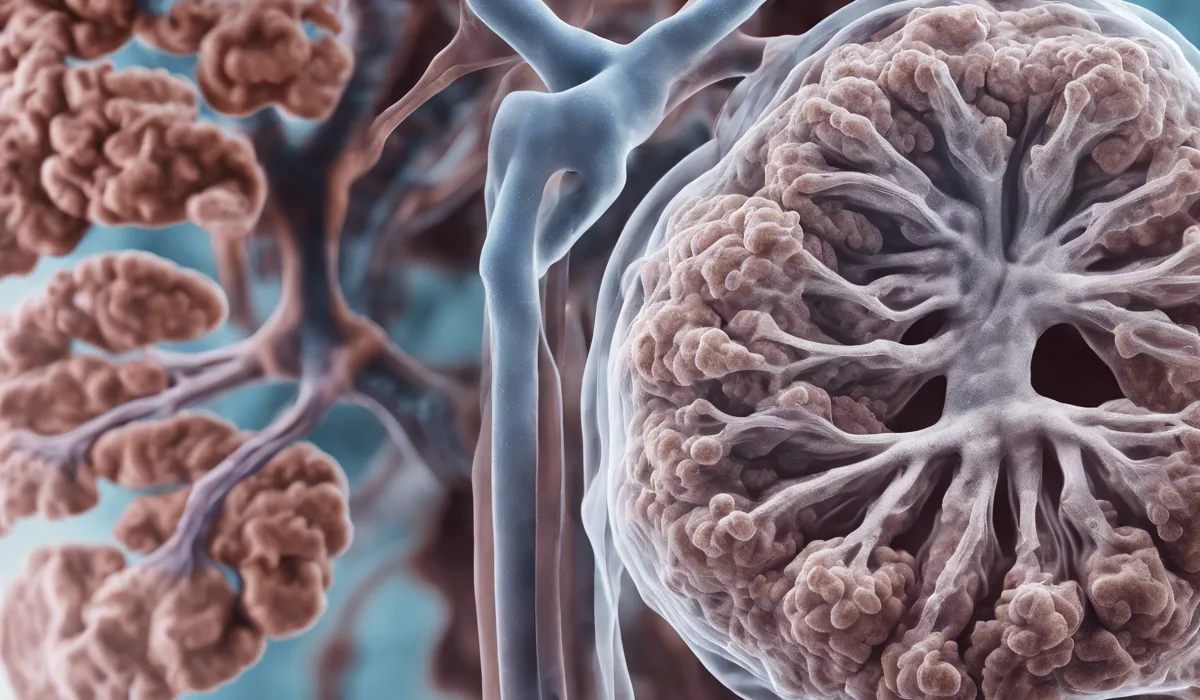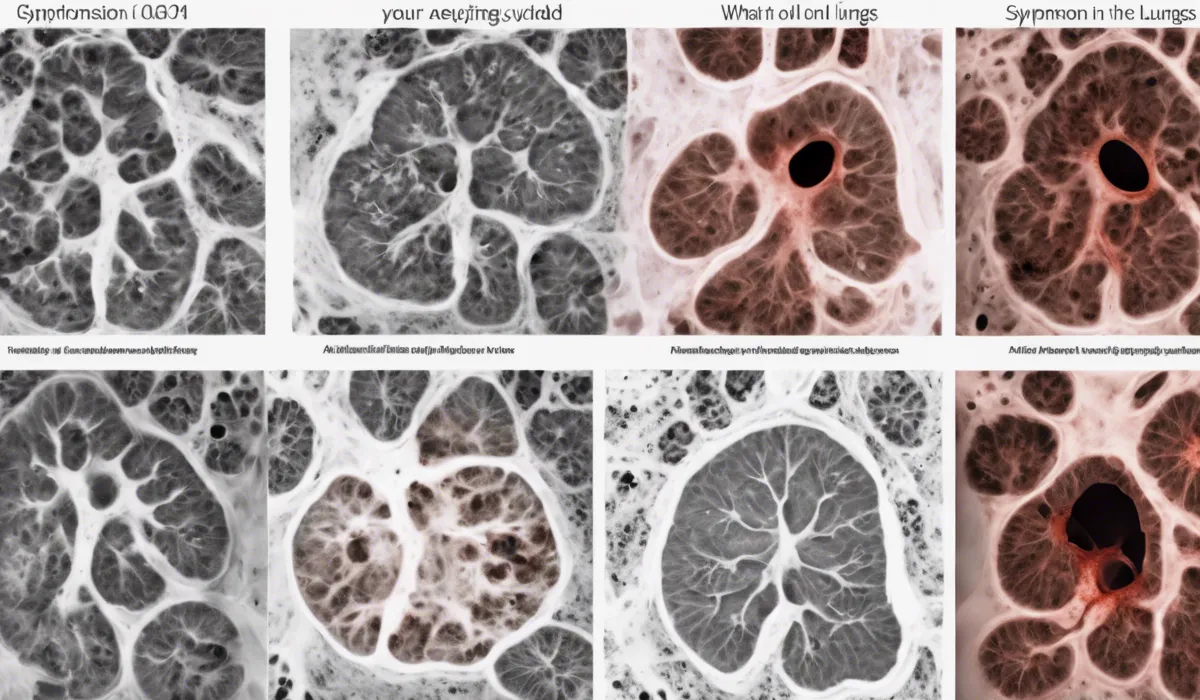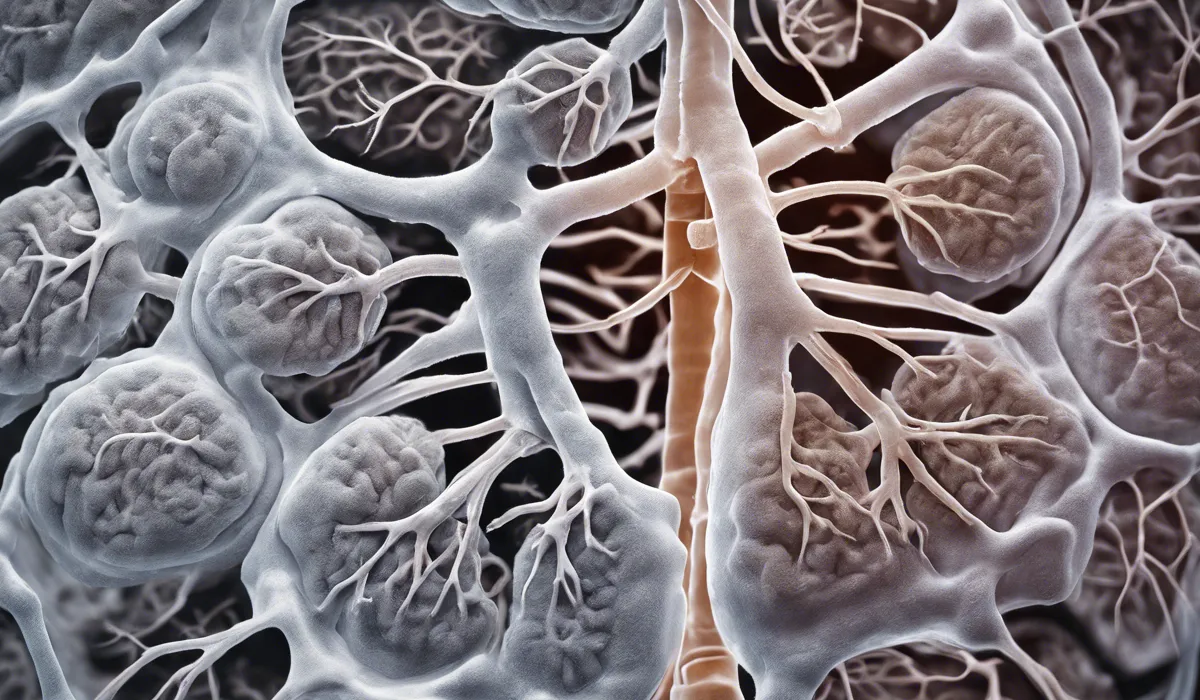Symptoms of mold in the lungs often include persistent coughing, wheezing, shortness of breath, and chest tightness. Allergic reactions may also occur, such as sneezing and a runny nose. In severe cases, mold exposure can lead to lung infections or hypersensitivity pneumonitis.
Mold and Its Impact on Lung Health

What is Mold?
Mold is a type of fungus that can grow both indoors and outdoors. It thrives in warm, damp, and humid conditions and reproduces by releasing spores into the air.
These tiny spores are invisible to the naked eye and can easily spread throughout your home.
Optimal Conditions for Mold Growth
Mold loves moisture and can grow on many different surfaces, such as paper, cardboard, ceiling tiles, and wood.
Poor ventilation, leaks, and flooding can create the perfect environment for mold to flourish in your home.
Inhalation of Mold Spores
When mold is growing, its spores can be released into the air. These spores can then be inhaled, entering the lungs and causing health issues, especially for individuals with allergies or asthma.
Mold’s General Impact on Respiratory Health
Exposure to mold can irritate the airways, causing a variety of respiratory symptoms. For those with pre-existing conditions, mold can exacerbate symptoms, leading to more serious health complications.
Recognizing Symptoms of Mold Exposure in the Lungs

Common Respiratory Symptoms
One of the most noticeable signs of mold exposure is a persistent cough or wheezing.
Difficulty breathing and chest tightness can also occur, making it important to monitor any changes in respiratory health.
Allergic Reactions to Mold
Mold can trigger allergic reactions, leading to symptoms like sneezing, itchy eyes, and nasal congestion. These reactions can be especially troubling for individuals sensitive to mold.
Asthmatic Responses to Mold
For people with asthma, mold can be a serious trigger. It can increase the frequency and severity of asthma attacks, making it essential for asthmatics to maintain a mold-free environment.
Infections Caused by Mold
Mold exposure can sometimes lead to lung infections, bronchitis, or pneumonia. These conditions are more severe and typically require medical attention.
Systemic Symptoms from Mold Exposure
Aside from respiratory symptoms, mold exposure can cause systemic effects like fatigue, fever, and a general feeling of malaise.
If you experience these symptoms, it could be a sign of mold-related health issues.
Diagnosis and Treatment of Mold-Related Lung Issues

Diagnosing Mold Exposure and Lung Problems
Diagnosing mold-related lung issues can involve a physical examination, imaging tests, and pulmonary function tests. These methods help doctors determine if mold is affecting your lungs.
Treatment Options for Mold in the Lungs
Treating mold-related lung issues often includes medication to alleviate symptoms. Avoiding further mold exposure and hiring professionals for mold removal are also crucial steps.
Long-Term Management and Prevention
Improving indoor air quality and controlling humidity are long-term strategies to prevent mold growth. Regular cleaning and maintenance can also help keep mold at bay.
Seeking Medical Attention for Mold-Related Lung Issues
If you suspect that you have a mold-related lung issue, it’s important to seek medical attention promptly. Early diagnosis and treatment can prevent more serious health problems.
FAQs About Symptoms of Mold in Your Lungs
What are the common symptoms of mold exposure in the lungs?
Common symptoms include persistent coughing, wheezing, shortness of breath, and chest tightness.
Can mold in the lungs cause allergic reactions?
Yes, allergic reactions such as sneezing and a runny nose may occur due to mold exposure.
What are severe symptoms of mold in the lungs?
Severe symptoms can include lung infections or hypersensitivity pneumonitis, which require medical attention.
Is it possible to have shortness of breath due to mold in the lungs?
Yes, mold exposure can lead to shortness of breath as a symptom.
What should I do if I experience symptoms of mold in my lungs?
If you experience symptoms of mold in your lungs, seek medical advice to determine the appropriate treatment.
Final Thoughts
Symptoms of mold in the lungs can manifest as persistent respiratory issues such as coughing, wheezing, and breathlessness, accompanied by chest discomfort.
Allergic symptoms like sneezing and nasal discharge are common. In more severe scenarios, mold exposure might escalate to lung infections or hypersensitivity pneumonitis, highlighting the necessity for awareness and timely intervention.
